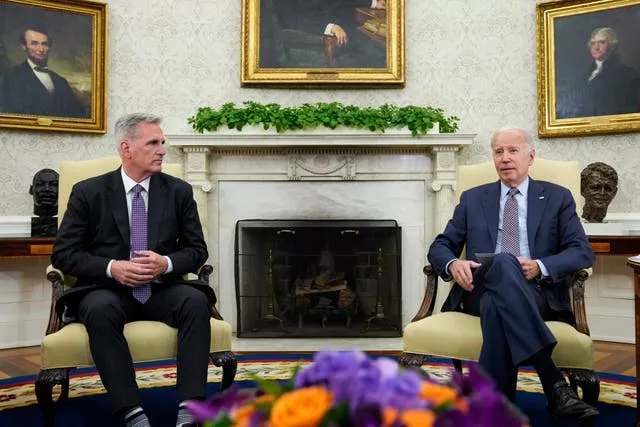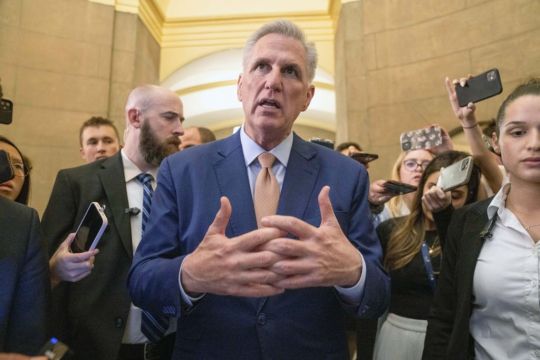Republicans complained of a “lack of urgency” as talks continue to resolve the US budget dispute and avert a chaotic federal default.
Failure to strike a deal by the June 1 deadline would inflict economic pain and throw the US financial markets into turmoil – having fallen on Tuesday with no deal in sight.
“We’re not there yet,” said House Speaker Kevin McCarthy, who insisted he will agree a Bill “that doesn’t spend less than we spent this year”.
He said negotiators are eyeing “creative” ways of rolling back spending, saying: “I believe we can still get there — and get there before June 1.”

North Carolina representative Patrick McHenry said: “What I sense from the White House is a lack of urgency.”
White House press secretary Karine Jean-Pierre labelled the suggestion President Joe Biden was not acting with urgency as “ridiculous”.
“He wants to see this done as soon as possible,” she said.
Negotiations over raising the nation’s debt limit – which stands at 31 trillion dollars (£24.9 trillion) – have dragged into a third week with the White House demanding Congress lift the ceiling to ensure the nation can pay its bills.
But Mr McCarthy, who held talks with the president which both men described as “productive” on Monday, urged the administration to negotiate a budget package that would reduce spending to reduce ballooning deficits in exchange for a vote to allow future debt.

Negotiations are focused on finding agreement over a 2024 budget year limit.
Republicans have set aside their demand to rollback spending to 2022 levels, but say next year’s government spending must be less than it is now while the White House is offering to freeze spending at current 2023 numbers.
Mr McCarthy promised politicians he will abide by the rule to post any Bill for 72 hours before voting, making any action doubtful until the weekend — just days before the potential deadline.
The Senate would also have to pass the package before it could go to Mr Biden’s desk to be signed.
The Treasury said on Tuesday it is keeping in close contact with federal agencies on their planned spending as it monitors cashflows.







